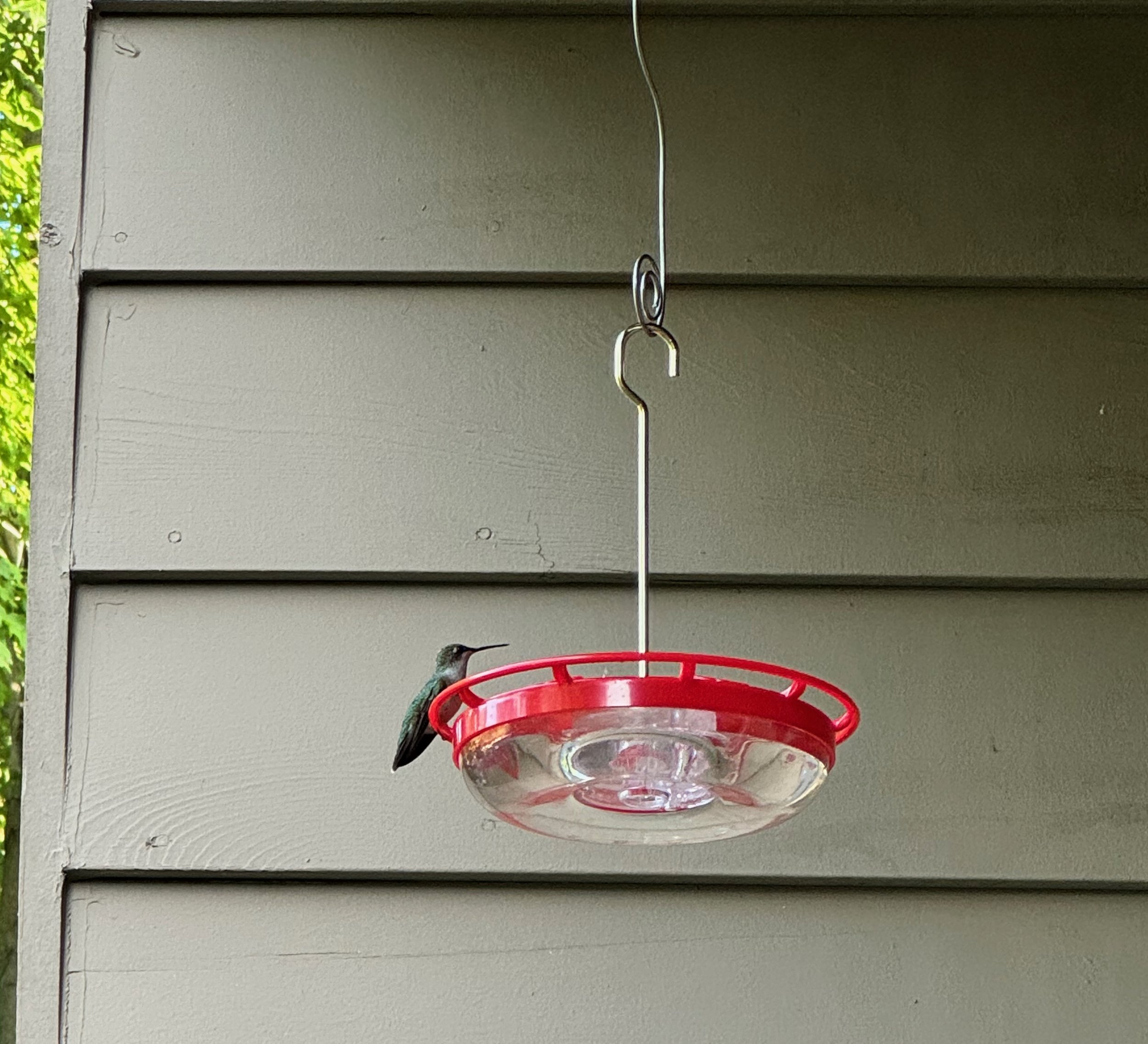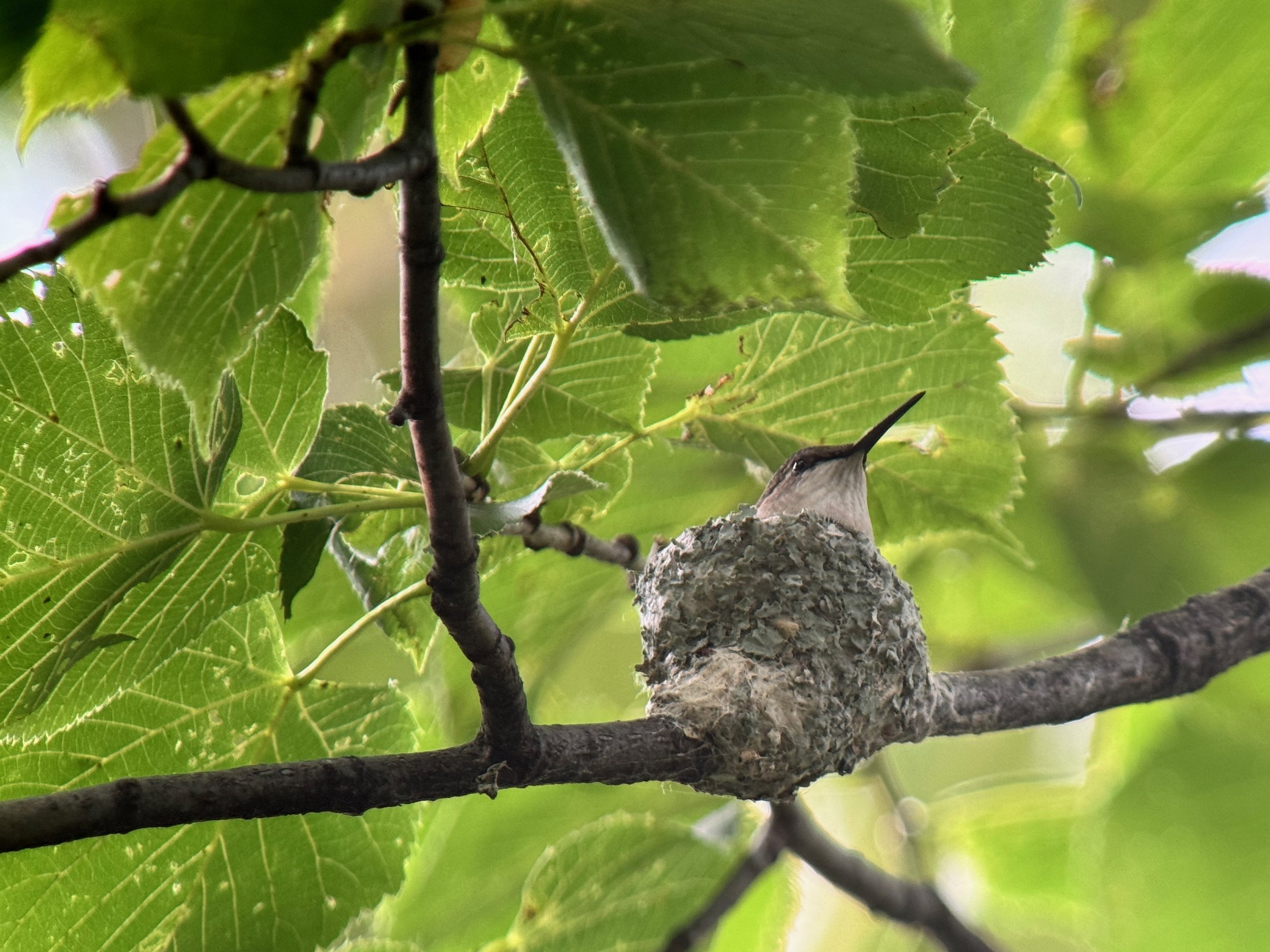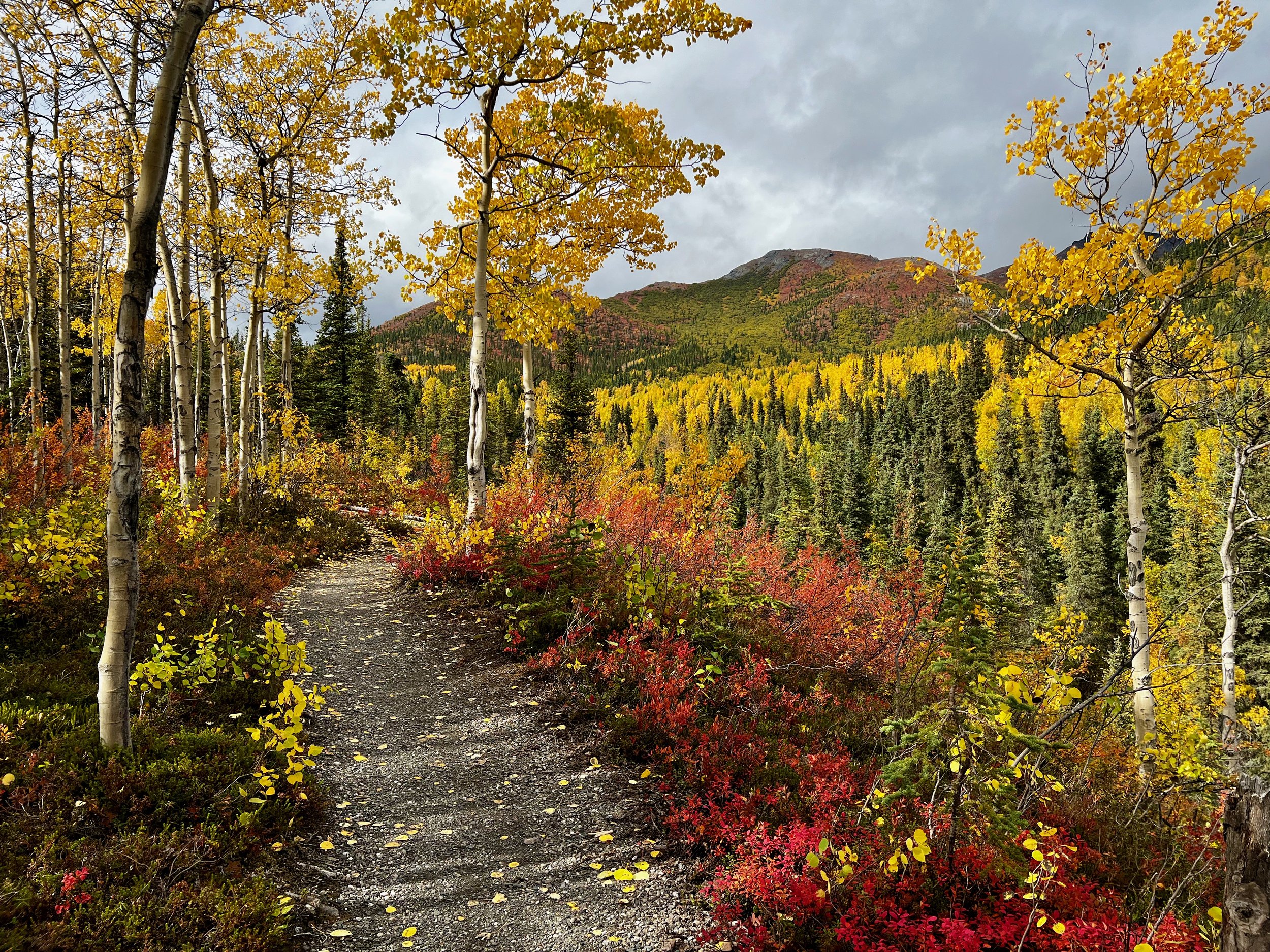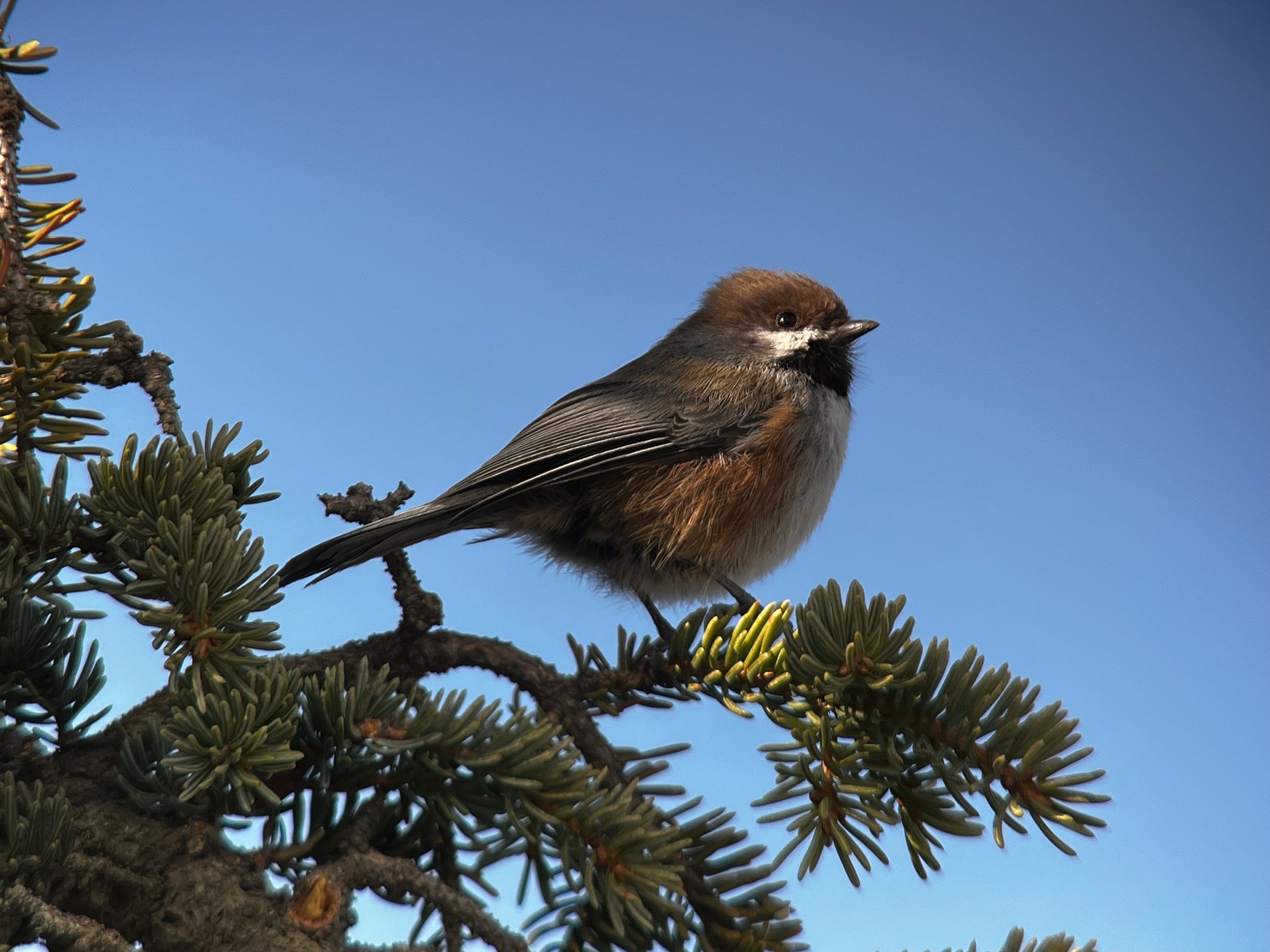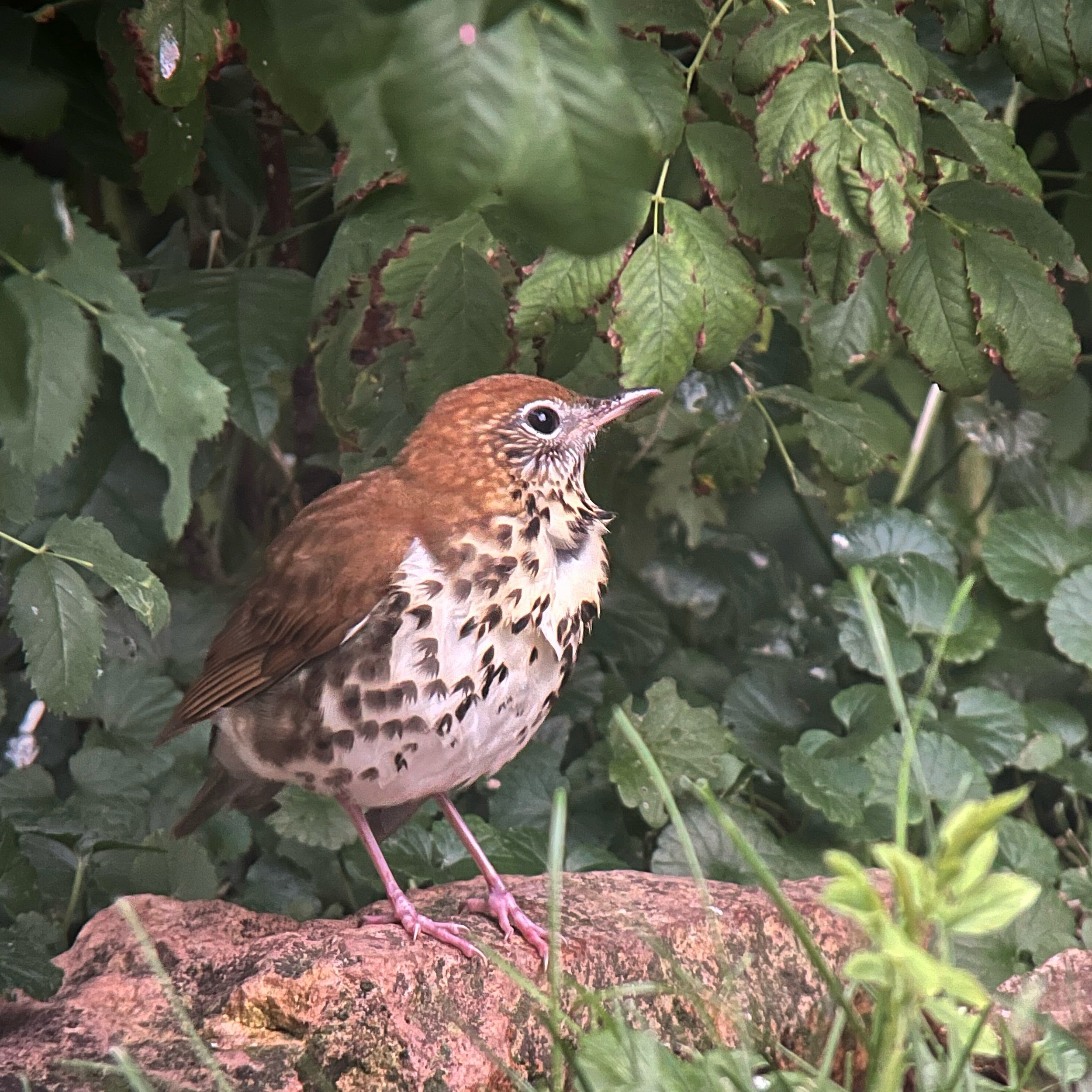Hummingbird coming in for nectar as I put this post together.
It has been a crazy ruby-throated hummingbird summer for me. And I’m grateful. Even as I type this on a Thursday evening in August on my deck, a ruby-throated hummingbird is hovering close to my nectar feeder while trying to decide if I’m a threat.
Ruby-throated hummingbird nest digiscoped with my phone and spotting scope.
I was walking around Westwood Hills at the end of July and watched a hummingbird gleaning insects around a water feature. I watched her fly up to a thin branch right over the trail to what looked like a small notch on the tree. I got her in my binoculars, and sure enough she was on a nest. I uploaded a video on Instagram that gives a better perspective of where the nest was.
Two weeks later I came back and sure enough there were two chicks sticking their little heads out.
Baby hummingbirds! If you want to see some baby hummingbird tongue, check out the video on Instagram.
When I knew I was moving back to Minnesota, I checked an apartment complex that was on my old birding patch. I used to pass this place all the time while birding and thought the grounds right on a wetland with a water feature and Joe-Pye-weed looked ideal. When I mentioned it to my husband at the time, he didn’t like the zip code, “That’s St. Louis Park, I have to have a Minneapolis zip code.” We all have our quirks.
But when I was cruising the website while in Alaska looking for a new place to live, I noticed that they named all of their floor plans after birds. Welp. I guess this is fate? When I did the actual in-person inspection, the woman showing me around said, “I’m going to start by showing you the Starling.”
I said jokingly, “I’m not sure I can live in an invasive species.”
“Then I’ll show your the Loon,” she said.
How could I not fall in love with this place? I live in the Morning Dove floor plan—which cracks me up because it’s one of the larger units and the Osprey is a one bedroom. And if you’ve ever seen a mourning dove nest…it’s in no way shape or form a two bedroom.
But I also noticed on the tour that a lot of people had bird feeders—especially hummingbird feeders. Having worked in a bird store, I know how many people do not keep fresh nectar in their feeders and they kind of become a decroative thing that hummingbirds visit for a second and move one.
After I moved in, I put up a seed feeder and didn’t bother with nectar. In Minnesota, hummingbirds pass through the Twin Cities metro area in May and nest out of urban areas and show up like mad in August. May 2 I was on my deck. A female hummingbird flew to my deck, she hovered around the seed feeder, then hovered in front of my face, and then flew away.
“Oh hell,” I thought, “did my previous neighbor have a feeder and was she back from migration expecting the same from me?” The next day on my deck…the same thing happenedd. I’m not a fan of hummingbird feeders because you have to really keep them clean to get the hummers, I prefer flowers, but I also wasn’t in the right state of mind to maintain a proper hummingbird container garden.
But a bought a pair of hummingbird feeders so I could set up an easy rotation system of putting out a feeder and having a clean one at the ready to quickly refill and put out when the current one had the nectar go bad…about two and a half days based on sun angles.
Hummingbird perched on a branch just off of my deck.
She checked it out and sipped demurely.
Then one day with my home office window open I heard a familiar clicking sound. I went to my deck and instantly found the male ruby-throated hummingbird doing his "U” shaped dive back and forth in the tree in front of me. Wow, displaying and nesting right off my deck. I guess it pays birding-wise to have a zip code just outside of Minneapolis.
Now she and her offspring visit my feeder and periodically engage in some fun aerial jousting and I will keep my hummingbird feeder rotation going until the ruby-throats move on sometime in October.
In many ways I feel like I’ve had a “basic bitch” birding summer. I haven’t chased rarities, but just delighted in the common Minnesota birds I missed so much while I was in Alaska. And I’m grateful for the hot hummingbird action I’ve had at home and at Westwood.

